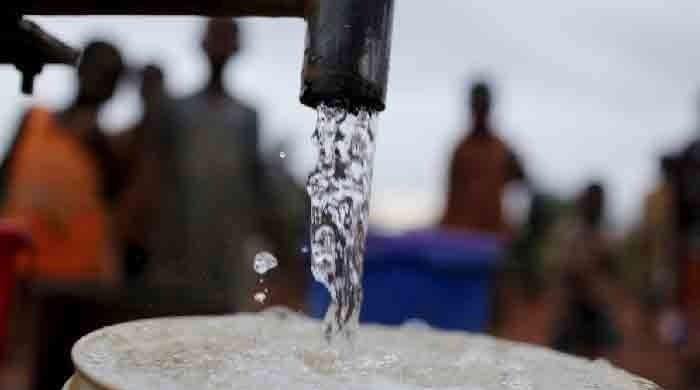Karachi Faces Acute Drinking Water Crisis: Report
A recent study by the Pakistan Council of Research in Water Resources (PCRWR) has revealed a concerning situation in Karachi, where almost half of the city’s inhabitants lack access to potable water. This issue affects a substantial portion of the over 20 million residents.
The report indicates a looming water crisis for Pakistan, projecting potential exhaustion of drinking water reserves by 2040 unless immediate action is taken.
Key Findings:
- 81% of Karachi residents resort to buying water.
- Over 90% of water sources have dangerous contaminants.
The lack of clean water is attributed to bacterial contamination, harmful chemical concentrations, and inadequate infrastructure within Pakistan’s largest metropolitan area.
Pakistan is currently ranked among the most water-stressed countries globally. The escalating water scarcity is exacerbated by climate change, ineffective governance, increasing population, and diminished freshwater resources.
The situation is especially critical in urban hubs such as Karachi, which is facing potential absolute water depletion within approximately the next 15 years.
The Karachi Water and Sewerage Board (KWSB) manages the city’s water distribution, sourcing approximately 95% of its supply from the Indus River through Keenjhar Lake.
The city’s water demand is 1,200 million gallons daily, but the current supply is only 650MGD, creating a 550MGD gap. Consequently, residents, particularly in low-income areas, turn to unauthorized water sources like private tankers, refineries, and wells.
These alternative solutions come with notable economic and health costs. The groundwater in Karachi contains salinity levels between 4,000 and 12,000PPM, which greatly exceeds the World Health Organisation’s (WHO) acceptable limit of 1,000PPM, rendering it unsafe for consumption.
The report highlights that 41% of Karachi’s population lacks access to safely managed drinking water, and more than 90% of water sources are biologically compromised. This contributes to widespread waterborne diseases like diarrhoea, typhoid, and hepatitis.
The most at-risk populations are women, children, and the elderly, who disproportionately endure these outbreaks.
The Sindh MICS 2017–2018 survey, published in 2021, found that 79.1% of water sources in Karachi contain E. coli, and contamination increases to 85.5% at the household level, signalling considerable system-wide risks.
Karachi’s water infrastructure is further strained by leaks, illegal connections, aging pipelines, and poor maintenance, resulting in increased contamination and significant water wastage.
A survey indicated that 86% of individuals had not received piped water from KWSB for a prolonged period. As a result, a majority rely on private suppliers, wells, or hand pumps, many of which are undependable and unsafe.
A disturbing 42% of residents indicated they had never witnessed government water quality inspections in their localities, and 58% were uncertain if any checks had been performed.
This absence of regulation and transparency diminishes public confidence in the water system, exposing residents to major health risks.
The KWSB faces ongoing challenges, undermined by fiscal mismanagement, political involvement, and reform implementation issues.



Comments (0)
No comments yet. Be the first to comment!
Leave a Comment